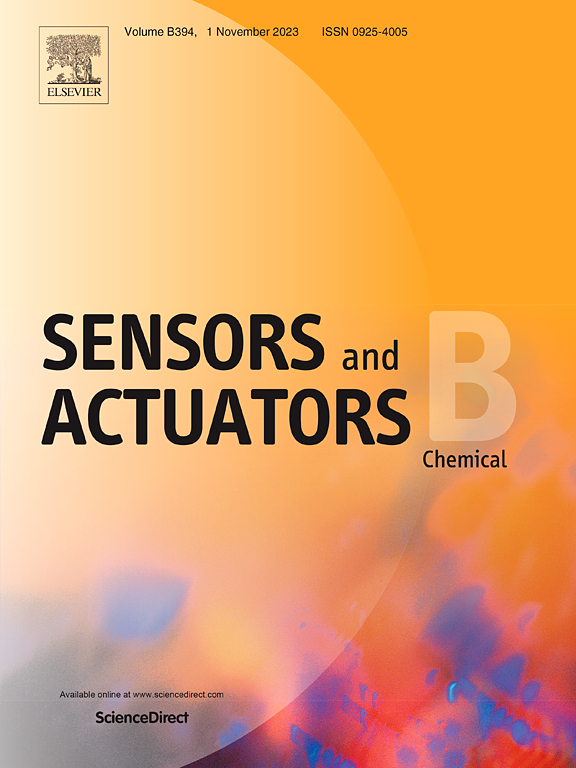Flake-like WO3 decorated by PdRh nanoalloys: Sensing performance, DFT calculation, and machine learning-enhanced selectivity for triethylamine gas detection
IF 8
1区 化学
Q1 CHEMISTRY, ANALYTICAL
引用次数: 0
Abstract
Bimetallic noble metal alloys attract extensive attention due to their excellent sensitization effects. Based on this, we synthesize monodisperse palladium (Pd) rhodium (Rh) alloy nanoparticles (NPs) and WO₃ spheres composed of flakes via a one-step hydrothermal method, followed by fabricating PdRh@WO₃ sensing materials with different mass percentages using an impregnation method. Testing revealed that at 240°C, the sensor based on 0.6 wt% PdRh@WO₃ exhibits a high response value of 240 toward 100 ppm triethylamine (TEA), approximately 33 times higher than that for ammonia and 62 times higher than formaldehyde, with response/recovery times of 20 s (s) and 27 s, respectively. The combination of density functional theory (DFT), gas chromatography-mass spectrometry (GC-MS) and diffuse reflectance infrared Fourier transform spectroscopy (DRIFTS) further confirms that the PdRh alloy promotes TEA adsorption and charge transfer. Two machine learning models, random forest (RF) and support vector machine (SVM), achieve accurate discrimination between TEA and interfering gases, further verifying the sensor's high selectivity. Moreover, the sensor demonstrates excellent applicability through real-time environmental simulations using an STM-32 microcontroller platform. This study provides a new solution for rapid detection and real-time monitoring of TEA in industrial production.

PdRh纳米合金修饰的片状WO3:传感性能、DFT计算和机器学习增强的三乙胺气体检测选择性
双金属贵金属合金因其优异的增感效果而受到广泛关注。在此基础上,采用一步水热法制备了单分散钯(Pd)铑(Rh)合金纳米颗粒(NPs)和由薄片组成的WO₃球,然后采用浸渍法制备了不同质量百分比的PdRh@WO₃传感材料。测试表明,在240°C时,基于0.6 wt% PdRh@WO₃的传感器对100 ppm的三乙胺(TEA)表现出240的高响应值,比氨高约33倍,比甲醛高62倍,响应/恢复时间分别为20秒(s)和27秒。密度泛函数理论(DFT)、气相色谱-质谱(GC-MS)和漫反射红外傅里叶变换光谱(DRIFTS)的结合进一步证实了PdRh合金促进了TEA的吸附和电荷转移。随机森林(RF)和支持向量机(SVM)两种机器学习模型实现了TEA和干扰气体的准确区分,进一步验证了传感器的高选择性。此外,该传感器通过使用STM-32微控制器平台进行实时环境模拟,证明了出色的适用性。本研究为工业生产中TEA的快速检测和实时监测提供了一种新的解决方案。
本文章由计算机程序翻译,如有差异,请以英文原文为准。
求助全文
约1分钟内获得全文
求助全文
来源期刊

Sensors and Actuators B: Chemical
工程技术-电化学
CiteScore
14.60
自引率
11.90%
发文量
1776
审稿时长
3.2 months
期刊介绍:
Sensors & Actuators, B: Chemical is an international journal focused on the research and development of chemical transducers. It covers chemical sensors and biosensors, chemical actuators, and analytical microsystems. The journal is interdisciplinary, aiming to publish original works showcasing substantial advancements beyond the current state of the art in these fields, with practical applicability to solving meaningful analytical problems. Review articles are accepted by invitation from an Editor of the journal.
 求助内容:
求助内容: 应助结果提醒方式:
应助结果提醒方式:


